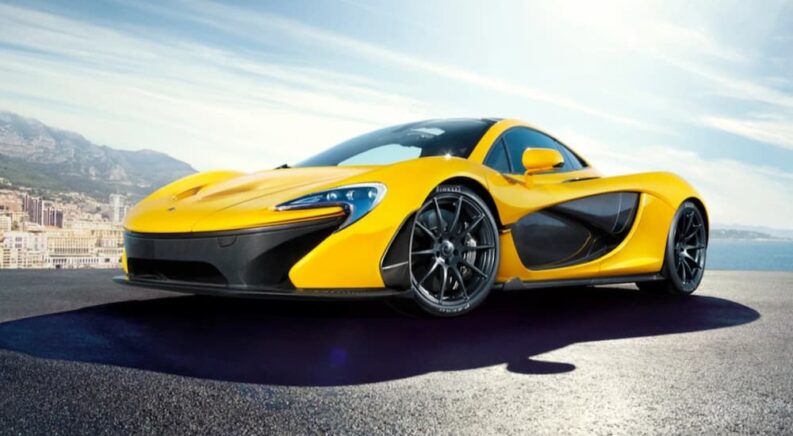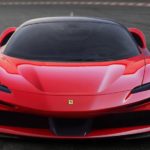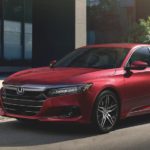Hybrid technology has come a long way since the Prius first showed up at the turn of the millennium. What was once a niche category for the eco-conscious has grown into an undeniable trend in the automotive world, with hybrid powertrains replacing gas engines in some of the industry’s most iconic models. From pickup trucks like the Ford F-150 and Toyota Tundra to three-row SUVs like the Jeep Grand Cherokee and Mazda CX-90, hybrids have found their way into every corner of the market.
This is even true of the high-performance segment, where hybrid technology has unlocked new potential and allowed automakers to produce some of the most powerful supercars in history. Any argument against this phenomenon can be negated with six simple words: all Formula One cars are hybrids. How did hybrids grow from the tree-hugger’s car of choice to become the preferred powertrain for the world’s top motorsports event? Read on as we explore the history of the hybrid vehicle, see how the tech made its way into the world of supercars, and explore the myriad benefits of electrifying your ride.
Hybrid 101
Let’s get this out of the way right from the start: hybrid supercars are not about efficiency. Sure, they might share a lot of technology with the ultra-efficient hybrids we’ve come to know and love over the last couple of decades, but they’re ultimately built for performance. Supercars are always going to burn through gas a little quicker than their less-thrilling counterparts in a bid to deliver a high-performance experience, but it’s a fair enough trade-off for most drivers.
Case in point: The 2014 Ferrari LaFerrari, widely regarded as the first example of the modern hybrid supercar, gets just 12 MPG in the city and 16 MPG on the highway. This isn’t much of a deviation from the supercar segment as a whole and goes a long way in illustrating the ethos that lies at the heart of the high-performance hybrid. That’s not to say that efficiency doesn’t play a role: as guidelines around CO2 emissions tighten around the world––especially in European markets––hybrid technology has become one of the easiest ways for automakers to meet environmental standards without sacrificing the power and performance drivers have come to expect from the supercar segment.
But ultimately, hybrid technology is the perfect complement to the supercar segment for one simple reason: torque. The electric motors that drive a hybrid vehicle don’t have to rev up like their gas-powered forerunners, which means they can deliver instant torque as soon as you put your foot to the pedal. This is an especially important factor in racing scenarios, where off-the-line speeds and acceleration make all the difference when it comes to getting a good launch and passing other vehicles.
A Spark of An Idea
Hybrid supercars are nothing new. In fact, one of the industry’s most renowned automakers first experimented with the concept more than a century ago. The year was 1898, and Ferdinand Porsche was a promising young engineer at Vereinigte Elektrizitäts-AG Béla Egger, an electrical engineering company headquartered in Vienna, Austria. Long fascinated by all things electrical, Porsche had already displayed his technical prowess as a teenager when he wired up a lighting system in his parent’s house––no small feat for the late 1800s. Porsche would bring this spirit of innovation to Egger, where he would create what would go down in history as the first Porsche-designed electric car, the Egger-Lohner C.2 Phaeton.
Dubbed the P1, the car was driven by an electric motor that produced a mere 5 hp, had a range of 50 miles, and topped out at 20 mph. This electric car would be all-but-unrecognizable to contemporary drivers, resembling a traditional carriage more than the sleek, aerodynamic EVs we know today, but it would go a long way in serving as a test case for the potential of electric vehicles. Porsche entered the C.2 Phaeton in the 1899 Berlin road race, winning the gold medal and besting the second-place finisher by some 18 minutes. The C.2 also won rave reviews for its efficiency, recording the lowest energy consumption of any vehicle in the competition.
The C.2 served as a great proof-of-concept, but Porsche wasn’t done tinkering just yet. The famed engineer would leave his previous company for k.u.k. Hofwagenfabrik Ludwig Lohner & Co., a carriage-maker also based in Vienna. Intrigued by Porsche’s all-electric design, Lohner & Co. set Porsche to work on a new hybrid concept, the Semper Vivus. Powered by a combustion engine paired with a generator, the groundbreaking vehicle would enter widespread production in 1900 as the Lohner-Porsche Mixte.
The fledgling hybrid was a little different than the models one would find on the road today, using its gas engine to power small electric motors in the wheel hubs rather than to charge a central battery like in today’s hybrids, but the concept is close enough for the Mixte to qualify as an early example of the concept. The Mixte would showcase the potential of the hybrid design, but it never took hold on a larger scale due to the higher cost compared to mass-produced gasoline models. In the end, the Mixte would have to wait over 100 years for another hybrid to join the Porsche lineup with the introduction of the Cayenne S Hybrid in 2010.
Building a Better Supercar
“Supercar” has been a rather amorphous term throughout most of automotive history, but you know one when you see one. In the simplest possible terms, a supercar is any street-legal, high-performance sports car, but the bar for what makes a supercar a supercar has been steadily rising for much of the last 60 years. At one point, muscle cars like the Chevy Corvette or Ford Mustang might have qualified as a supercar, but the segment really coalesced into the type of supercars we know today with the advent of the Lamborghini Miura in 1966.
This mid-engine coupe, with its 3.9-liter V12 engine and 345 hp, would launch a new arms race in the automotive world, spawning no shortage of imitators and upping the standards for the category as a whole. Post-Miura, a model couldn’t really call itself a supercar unless it had eight to twelve cylinders, pumped out at least 400 hp, and boasted a top speed of at least 180 mph. Modern examples of the supercar include the Ferrari F8, Lamborghini Aventador, and McLaren 720S.
So how did hybrid technology find its way into the thoroughbred world of supercars? It all starts in a rather unlikely place with the comparatively pedestrian 2005 Honda Accord. In the days before the crossover boom, the Accord was one of Honda’s best-selling models, making the sedan the perfect platform for some hybrid experimentation. In its 3.0-liter V6 guise, the Accord already made a respectable 240 hp but wasn’t blowing anyone away with its fuel efficiency. Honda threw a hybrid system under the hood, and the Accord immediately gained 15 hp, 20 lb-ft of torque, and, most importantly, better fuel economy than even the four-cylinder version.
Breaking out the Big Guns
Seeing the potential of the Accord Hybrid, Toyota would take the approach to the next level with the 2007 Lexus LS600h, a hybrid version of the popular luxury vehicle. The sedan’s electric motors were paired with a 5.0-liter V8, making the LS600h the world’s first hybrid V8. With 438 hp and 385 lb-ft of torque, the LS600h was edging into supercar territory, but it would take those hallowed names of the European auto industry to push the new segment over the edge. The McLaren P1 was among the first to perfect the formula, debuting in 2013 with a twin-turbo 3.8L V8 and hybrid assist to make 903 hp and 662 lb-ft of torque.
Never one to be left behind, Ferrari would follow suit with the LaFerrari soon after. With 950 hp and 715 lb-ft of torque to its name, this 6.3-liter V12 supercar took a different approach to the hybrid concept. The supercar uses Ferrari’s own proprietary hybrid technology known as KERS (kinetic energy recovery system), which was the same technology used in the brand’s Formula One cars at the time. KERS leverages the LaFerrari’s power, recovering a little bit of energy every time the brakes are pressed, converting that mechanical energy into electric power, and using it to get that extra boost that can make all the difference in a race. The resulting output is more than enough to make this car the most powerful Ferrari ever produced, an impressive achievement that demonstrates the appeal of hybrid powertrains.
Then there’s the brand that started it all. Porsche introduced the 918 Spyder in late 2013, giving the brand a new plug-in hybrid supercar to compete with the likes of McLaren and Ferrari. This V8 sports car is assisted by two electric motors that provide the 918 Spyder a combined 887 hp and a mammoth 944 lb-ft of torque. It’s a long way from the 5 hp that marked Porsche’s first hybrid effort, showing just how far the technology has come in the last century.
Hybrid Supercars are Here to Stay
Hybrid technology has been a boon to the world of supercars, allowing manufacturers to squeeze out more power than ever while staying on the right side of increasingly restrictive emissions standards. There’s no telling what the future might hold for hybrid supercars, but by most indications, they’ll be sticking around for a while. While all-electric vehicles are beginning to supplant hybrids as the go-to choice for the eco-conscious, they might not be the right choice for the supercar set due to their increased weight. The hefty battery required to power an EV makes the technology a non-starter for most supercar applications where the ever-important power-to-weight ratio is not to be ignored. EVs also tend to overheat when driven at high speeds for extended periods, which is another limiting factor. That’s not to say some brands aren’t trying, with Porsche and Lamborghini already throwing their hats into the ring alongside newcomers like Tesla and Lucid, but for the time being, hybrid supercars look like they’re here to stay.




